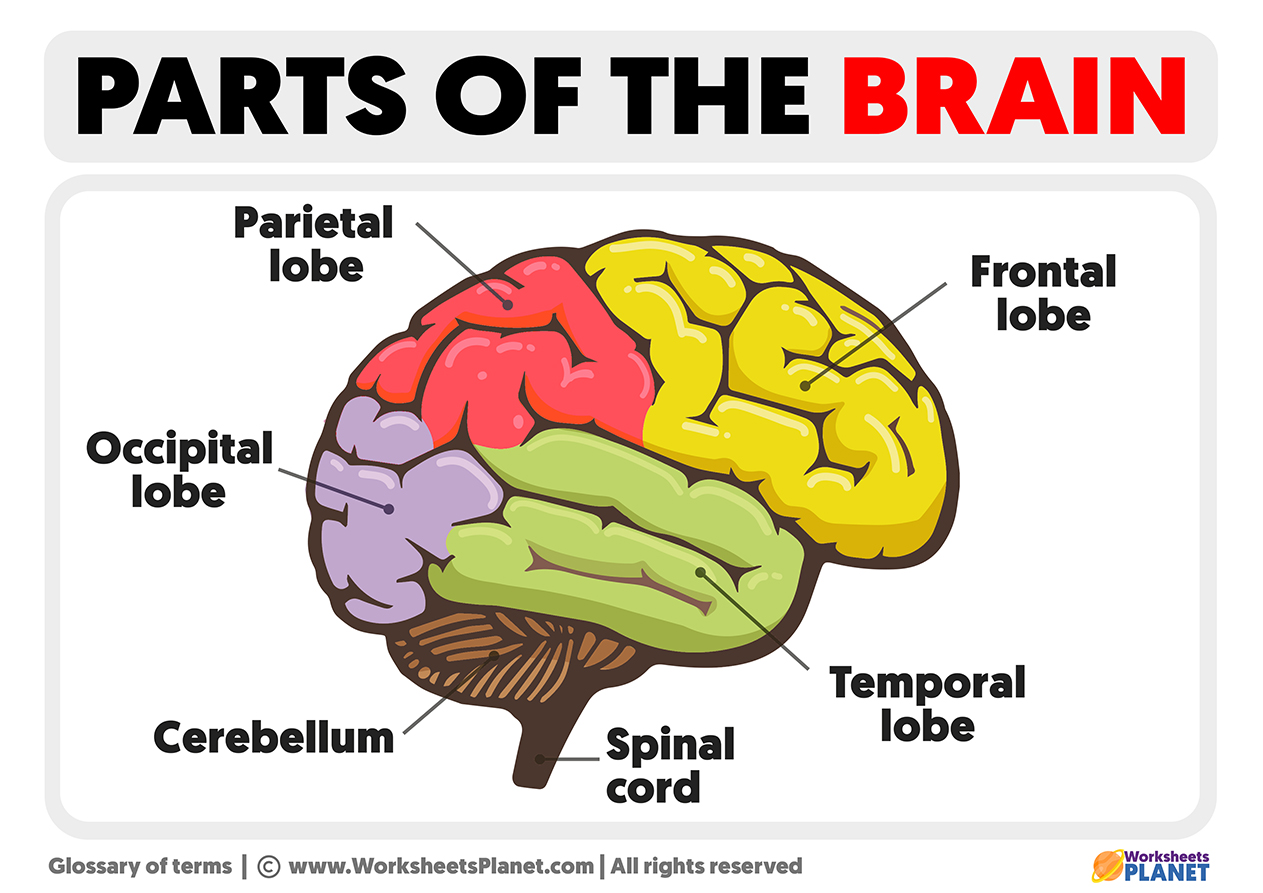The brain is the organ in which the nervous system’s activity is centralized. Although its parts are connected, the brain’s functions are usually divided into different areas. The brain is a very complex organ weighing around 1.5 kilograms. Now, so that its weight does not imply difficulty in our movement or how people live, the brain floats in the cerebrospinal fluid inside the bone structure, better known as the skull.

The brain is made up of 78% water, 10% fat, and 8% protein. It accounts for only 2% of body weight but uses the same energy as skeletal muscle at rest.
The brain is part of the central nervous system and includes an anatomical region called the brain. It is common to confuse this region with the brain. However, the brain is made up of various structures, such as the following:
1. Brain stem
The brain stem is located at the base of the skull. It controls vital functions such as heart rate, digestion, breathing, and blood pressure. In addition, it connects the brain with the spinal cord, thus carrying impulses to the rest of the body. The brain stem is divided into the medulla oblongata, the pons, and the midbrain.
2. Cerebellum
The cerebellum is responsible for maintaining balance and posture and is involved in the entire body’s movement. It ensures that the movements are carried out in a coordinated and precise manner.
3. Brain
The brain is related to the senses, emotions, memories, and reactions. Simply put, it is the boss of our body. It is responsible for receiving, processing, and responding to different stimuli. For example: when placing the hand on a hot surface, the brain receives a signal that the temperature is very high. Hence, it responds by sending an order to the hand muscles to withdraw it immediately.
How is the brain divided?
Researchers have divided the brain into different regions for many years to facilitate their study. Specific functions are associated with each of these macroscopic regions in the organism, so all of them are fundamental.
Left and Right hemispheres
First, the brain is divided into two cerebral hemispheres, the left and the right, which are divided into four lobes.
The right part is related to non-verbal expression. For example, intuition or recognition of faces, voices, melodies, etc. In this hemisphere, thoughts and memories are manifested through images.
If the left hemisphere is impaired, the person will find it difficult to speak and write. Also, he will have trouble expressing himself and understanding language. The functions are the ability to analyze, logical reasoning, and solve numerical problems.
Nowadays, it is considered that both hemispheres work together so that many of the functions are performed by both.
Both hemispheres are connected through a structure called the corpus callosum. The right hemisphere is in charge of controlling the left side of the body, while the left hemisphere controls the right side of the body.
Lobes
Each hemisphere is divided into four lobes:
- Frontal: conscious thought is processed here. In some way, it is here where problems are solved. And it is related to personality and behavior.
- Parietal: they are responsible for the perception of stimuli related to touch, pressure, temperature, and pain, as well as the control of voluntary movements.
- Temporal: they are responsible for perceiving and recognizing auditory and memory-related stimuli. It is also associated with language and communication.
- Occipital: they are related to visual stimuli.

